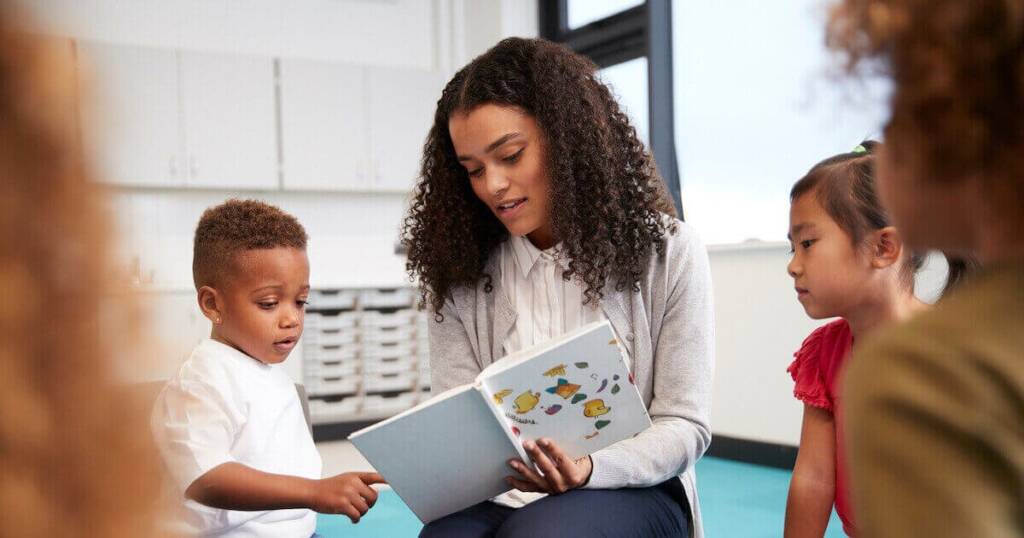Content warning: This article discusses mental illness, substance abuse, disordered eating and suicidal behaviors in young people.
Mental health is a major topic of concern pertaining to today’s students. This is largely due to the fact that there is more research and general awareness around mental health today than ever before. However, there is also evidence that the incidence of mental health challenges is growing. The Centers for Disease Control and Prevention (CDC) maintains data on mental health in children and teens, charting the incidence (and rise) of certain mental health issues over time.
This is a significant concern in schools because untreated mental illness (including depression, anxiety, ADHD, substance use disorders and more), in addition to posing health risks, can have a profoundly negative impact on student learning and achievement.
Unfortunately, many schools are under-resourced when it comes to adequately addressing mental health issues; even school nurses do not always receive comprehensive mental health intervention training. Most classroom teachers have little to no training in how to effectively handle sensitive situations when they become aware of potential mental health issues in the classroom.
However, there is also a bright spot. Because they often serve as “first responders” of sorts for their students, teachers are in a unique position to make a difference in these children’s lives.
*Disclaimer: This blog post is not intended to replace comprehensive mental health intervention training for teachers. The information presented here should not be used to diagnose or treat mental illness or mood disorders. If you have serious concerns about a student’s mental health, please alert your school’s nurse and/or the child’s parents/guardian(s).
What Are the Most Common Mental Health Issues in Schools?
How Do Mental Health Disorders Impact Students in School?
Statistics About Mental Health in School
Behavioral Issues vs. Mental Health Issues at School
How to Spot Signs of Mental Health Issues in the Classroom
How to Address Common Mental Health Problems at School
FAQs About Mental Health in Schools
What Are the Most Common Mental Health Issues in Schools?
According to the CDC, the most common mental health issues in schools are anxiety and depression, followed by oppositional defiant disorder (ODD) and attention-deficit/hyperactivity disorder (ADHD). Eating disorders, bipolar disorder, habitual self harm and substance abuse disorder are also extremely prevalent, and often occur alongside the most common teen mental health issues.
Though not classified as mental health disorders, other conditions that can have a significant effect on children’s mental and emotional wellbeing include autism spectrum disorder (ASD) and developmental disabilities like Down syndrome and cerebral palsy.
The World Health Organization (WHO) estimates that 14% of all children aged 10 to 19 experience some form of mental health issue, but that this number may be conservative due to undiagnosed conditions and fear of exposure. An oft-cited 2005 study published in the Archives of General Psychiatry found that half of all Americans will experience a diagnosable mental disorder at some point in their life, with the onset usually occurring in childhood or adolescence.
As such, mental health issues in children are not just a symptom of growing pains, but may indicate a need for lifelong therapeutic or medical support. According to the WHO, “Protecting adolescents from adversity, promoting socio-emotional learning and psychological well-being, and ensuring access to mental health care [is] critical for their health and well-being during adolescence and adulthood.”
How Do Mental Health Disorders Impact Students in School?
While academic performance is certainly not the most important concern when it comes to a child’s mental health, poor grades or missing school work may be a sign a student is grappling with larger issues. Many children and adolescents spend up to 40 hours per week at school during the academic year, so the classroom may be where the signs and effects of mental illness can manifest most noticeably.
Mental health disorders can impact students in the following ways:
- Certain conditions like ADD, ADHD and depression make it difficult to concentrate or retain information, resulting in poor academic performance.
- Students may have difficulty building and maintaining relationships with their peers, teachers and coaches.
- Depending on the severity of the condition, students may fake an illness to avoid going to class, and may even be physically unable to attend school.
- Students suffering from untreated mental health disorders can act out, resulting in disciplinary action.
- Mental illness can lead to physical changes that may make it difficult for students to concentrate, such as weight loss or gain, sleep deprivation, stomachaches, headaches and “brain fog.”
- Untreated mental illness can result in hospitalization from disordered eating, self harm, reckless behavior, substance abuse or attempted suicide.*
- Untreated or inadequately treated mental illness can increase the risk of school dropout, unemployment, substance use, arrest, incarceration and early death.
Students with diagnosed mental or behavioral issues may have an Individualized Education Plan, or IEP. This is a written document that details the special education services a child must receive, as well as any considerations and accommodations around their behavior and physical, mental and emotional health.
An IEP will sometimes include specific guidance on how teachers should handle certain behaviors or events in the classroom. However, if a student does not have an IEP and exhibits behaviors that are out of the ordinary, teachers must be mindful of addressing these in a way that respects the students’ privacy and specific challenges.
*If you believe a student or colleague is suffering, please provide them with contact info for the 988 Suicide and Crisis Lifeline. The lifeline provides free, confidential, 24/7 support for people in distress. Those in need can talk to a crisis counselor by phone or chat, at any time.
Statistics About Mental Health in School
The National Alliance on Mental Illness (NAMI) has compiled a list of eye-opening statistics and insights into the issue of mental health in schools. Pulling from multiple sources, NAMI presents the following:
- Approximately 50% of all mental health conditions begin by age 14. (Archives of General Psychiatry)
- 16.5% of young people aged 17 and under experience at least one mental health disorder, but only half receive the mental health services they need. (Journal of the American Medical Association)
- Suicide is the second leading cause of death for those aged 10–34. (National Institute of Mental Health)
The CDC reported that, during the COVID-19 pandemic, 37% of U.S. students in grades 9–12 experienced poor mental health, with 20% reporting that they had seriously considered suicide. Isolation from peers, feelings of fear and uncertainty, economic hardship and family-related stress all contributed to this alarming trend.
What the Experts Are Saying
Mental health experts and education leaders largely agree on the seriousness of the issue and the need to act.
Commenting on the overall issue and how the pandemic has intensified concerns around student mental health, CDC acting Principal Deputy Director Dr. Debra Houry said that statistics like those cited above “echo a cry for help.”
“The COVID-19 pandemic has created traumatic stressors that have the potential to further erode students’ mental wellbeing,” Houry explains. “Our research shows that surrounding youth with the proper support can reverse these trends and help our youth now and in the future.”
Tramaine EL-Amin, client experience officer at the National Council for Mental Wellbeing, echoed Houry’s sense of urgency. “The pandemic shined a spotlight on our children’s mental health,” she said in a Pew Charitable Trusts article. “There’s no question that it’s something we need to pay attention to and that we need to act pretty quickly so that things don’t get worse.”
Since teachers can spend up to 40 hours a week with their students, they have a responsibility to support their students and even intervene in extreme cases.
“Teachers are critical to identifying students who need mental health supports,” Nancy Lever, co-director of the National Center for School Mental Health at the University of Maryland School of Medicine, said in the same Pew article. Lever emphasizes the importance of training those who interact with students to “recognize mental health crises and understand how trauma affects children’s mental health and learning.”
Behavioral Issues vs. Mental Health Issues at School
Most children will display or struggle with outsized behaviors at some point during their development. Emotional outbursts and tantrums are a normal part of childhood, and children should not be reprimanded for trying to work through their feelings before their cognitive abilities are fully formed (as long as the behavior does not harm anyone or anything else). However, there comes a point at which children naturally outgrow certain behaviors; when children continue to display challenging behaviors, it becomes an ongoing behavioral issue.
If behavioral issues such as angry outbursts, high anxiety or violence persist past the toddler stage, it may be time to screen a child for signs of mental illness. Untreated or unaddressed behavioral or emotional issues have a negative impact on children’s success in school. A 2018 study from the University of Georgia reported that a significant portion of students who drop out of school struggle with controlling their aggression.
Additionally, a 2011 report from the National Center for Special Education Research found that over 52% of students with disabilities who drop out of high school tend to have emotional or behavioral disabilities (as cited by the producers of the 2012 documentary film, “Who Cares About Kelsey?”).
It’s important to clarify that behavioral disorders and mental disorders are two different things. Behavioral disorders refer to conditions wherein a student appears to make a conscious choice with their behavior or responses, such as defying a teacher, lying, engaging in disordered eating or bullying. While these behaviors may be incredibly difficult for an individual to control, they are not considered involuntary.
By comparison, mental disorders like schizophrenia, Tourette’s Syndrome, depression and bipolar disorder are all conditions that cause involuntary behaviors. Mental and behavioral issues often go hand-in-hand; someone who suffers from depression or bipolar disorder could develop behaviors like anorexia, self harm or oppositional defiance.
All children and young people push boundaries. If a child understands that certain negative behaviors are not warranted or acceptable, and persists with them anyway, it may be a sign of a deeper struggle.
How to Spot Signs of Mental Health Issues in the Classroom
If you believe a student is experiencing mental health issues or illness, please notify the student’s guidance counselor, your school’s nurse and/or the student’s parents or legal guardian(s). Any of these parties may already be aware of the situation.
Some signs to watch out for include:
- Drastic changes behavior or personality
- Short temper
- Severe mood swings
- Extreme difficulty concentrating
- Heightened and sustained agitation
- Drastic weight loss or gain
- Resentment, hyper-sensitivity or spitefulness toward others
- Sensitive to touch, sound or other stimuli
- Frequent arguments with authority figures or other adults
- Refusal to comply with instructions, rules or requests
- Deliberate antagonism toward others
- A blatant lack of accountability for their own behavior
- Antisocial or solitary tendencies
- Frequent tardiness or absence from school
- Noticeable lack of engagement in class or with other students
- Fatigue or low energy
- Stealing or deliberate destruction of others’ property
- Violent physical tendencies
- Signs of self harm
- Signs of substance abuse (physical or behavioral)
- Bullying or threatening behavior toward others
- Appearing very sad or withdrawn for an extended period of time
- Frequent trips to the bathroom
- Persistent effort to sit out of class activities
Any behavior that impacts the safety of the student, their peers or you should be flagged as a concern and reported to a guidance counselor, the school nurse or appropriate administrators. If you are concerned that a certain behavior may indicate a mental health issue, be mindful of administering punishment before seeking understanding.
How to Address Common Mental Health Problems at School
Teachers have neither the expertise nor the training to comprehensively address mental health issues in school. They do, however, have the power to make their classrooms as safe as possible and know where to find resources that will best meet students’ needs.
If you know a student is struggling with anxiety or depression, you can build flexibilities into your schedule or curriculum to give this student the best chance of success. The Association for Children’s Mental Health offers the following suggestions:
- Give students with diagnosed mental health issues flexible deadlines if they are clearly suffering from a mental health-related episode. If a flexed deadline doesn’t work, consider giving them the option to redo work so they feel more confident turning it in.
- Know how to recognize a student’s escalating anxiety and how to intervene in a way that helps them feel safe and does not call attention to it.
- Pre-plan for group discussions to help reduce a student’s anxiety or make them feel more comfortable participating. Ask the student how they would feel most supported in group activities.
- Make a plan for what the student can do if and when they are unable to focus due to their mental health. This accommodation may be mandated by an IEP or 504 plan, but if it’s not, it’s still a good idea to help the student know what steps to take if they need support.
- Allow for breaks or opportunities to de-stress. Let the student take a short walk, find a quiet corner in the teacher’s lounge or even visit the nurse.
The U.S. Department of Health and Human Services provides the following guidance for teachers:
- Educate fellow staff, parents and students on the symptoms of and support for common mental health issues. Symptoms will vary greatly depending on the specific issue or disorder.
- Help ensure a positive, safe school environment. This includes promoting physical, mental and emotional health.
- Promote social and emotional competence to children and help them build resilience. In children, these behaviors present themselves as confidence, optimism, caring and respect for oneself and others, problem-solving and coping skills, ability to reframe stress and a sense of purpose and meaning.
- Teach and reinforce positive behaviors and decision-making. Specific curriculum choices can even empower students to lead and make decisions.
- Encourage helping others. This can be demonstrated through a class volunteering initiative, an ongoing charitable drive and/or curriculum choices that reinforce the importance of empathy and compassion.
- Help ensure access to school-based mental health resources. Work with guidance counselors or behavior support specialists to ensure that students get the help they need. If your school does not have mental health resources, research services available in your community that students can access.
- Learn evidence-based strategies for supporting students’ mental health in the classroom.
- Work with your state, district and school to learn about school mental health and develop a school mental health program. There are even grants available to teachers for this kind of work.
- Familiarize yourself with tips for talking to children after a disaster or traumatic event.
Knowing how to address and accommodate different student needs can help make your classroom a safe, secure place where students feel comfortable sharing their concerns and challenges. It helps when teachers have the knowledge to address different student learning styles in order to mitigate stress caused by academic pressure.
Since students spend so much of their time at school, a trusted teacher can become an invaluable resource and support to students who are struggling. Sure, an excellent lesson can leave its mark on a student, but a teacher who cares can make a lasting difference.
This report is brought to you by the University of San Diego’s online Master of Education degree program, a 100% online master’s degree program for professionals that emphasizes 21st century skills, equity and social justice, responding to Common Core standards and classroom inquiry.
FAQs About Mental Health in Schools
Helpful Resources
Crisis aid: 988 Suicide and Crisis Lifeline
Education: National Alliance on Mental Illness
Substance abuse: Substance Abuse and Mental Health Services Administration (SAMHSA)
Mental health resources: For Educators | U.S. Department of Health and Human Services
Film: Who Cares About Kelsey? | LikeRightNow Films
Video: How Can We Improve School-Based Mental Health Support? | TEDxYouth@BeaconStreet




